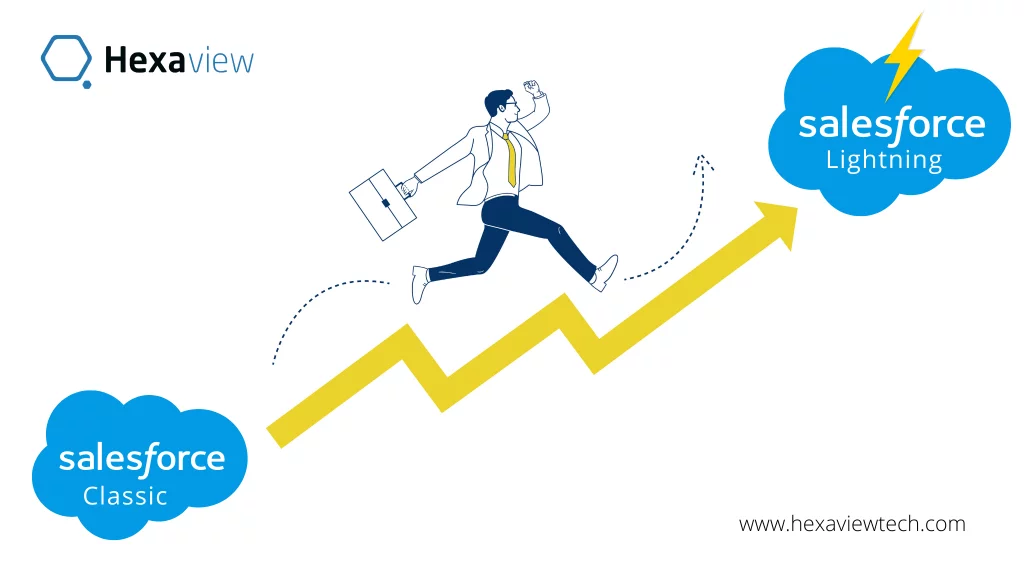In the modern world, Salesforce has developed into a crucial necessity. The market is highly competitive, and the environment is essentially hostile. Salesforce has emerged as a savior to help organizations all around the world identify their full potential. Salesforce offers several formats and platforms. Salesforce mainly comes in two different themes or editions that are Salesforce Classic and Salesforce Lightning.
What is Salesforce Classic?
As the name implies, Salesforce Classic is the first and older version, whereas Salesforce Lightning is the most recent version and includes several advanced functionalities that aren’t present in “Classic.”
The term “Salesforce Classic” is merely used to distinguish between the current and modern user interfaces. The first incarnation of the most well-known CRM in the world was Salesforce Classic. The UI of this platform now appears obsolete for several reasons. Some of these factors include the emphasis on text, the vast amounts of empty space, and the absence of high-quality graphics.
What is Salesforce Lightning?
A component-based framework called Lightning (Salesforce Lightning) is used to build Salesforce apps. Salesforce Lightning promises to make the processes for creating Salesforce apps simpler for business users who often lack programming knowledge.
Salesforce Lightning is equipped with the following features:
- The customer server architecture is perfect for usage with the Salesforce mobile app and Salesforce Lightning Experience while also accelerating application development and implementation.
- Users can construct applications without writing code by using pre-made and specially fabricated Lightning pieces.
- By utilizing external objects and relationships, the Lightning interface enables users to connect Salesforce to any external application.
- It features an HTML5-based lightning plan structure. It enables users to build programs that work with the Salesforce Lightning user interface.
Why Migrate from Classic to Lightning?
A few reasons of Salesforce Classic to Lightning migration have been listed below based on feedback from different organizations that migrated from classic to lightning.
- Enhanced Efficiency.
- Time and money saved
- Personalization and Third-Party Integrations
- A contemporary user interface
How to Migrate from Salesforce Classic to Lightning.
Salesforce Classic to Lightning migration comprises three phases:
- Discover Phase: Learn the benefits, assess readiness, plan the rollout strategy, and align with stakeholders.
- Roll-out Phase: Prepare users, implement new features adjust existing customizations.
- Optimize Phase: Measure success, motivate users, iterate with the new features, and turn off Salesforce Classic
Discover phase:
- Discover Salesforce Lightning: Begin by comprehending how lightning benefits your business.
- Evaluate Lightning Experience Benefits and Readiness: Build the case for transitioning your organization. Quantify the savings, efficiencies, and business growth you can realize and assess your organization’s readiness for the lightning experience.
- Plan your Roll Out: Create a plan for rolling out the Lightning experience, including your strategies for moving users and preparing them for change.
- Align with executives and Stakeholders: Make the case and align on your business and technical requirements, roll out plan, and change management strategy. Get the green light to transition your organization.
Roll-Out Phase:
- Prepare users for Lightning Experience: Educate and excite everyone about the coming changes.
- Integrate Lightning Experience Elements: Help users succeed by configuring Lightning Experience-exclusive features that increase productivity.
- Adjust existing Customization: Most of your organization’s existing customizations work as is in Lightning experience, but there are a few things that may need some attention.
- Start the Lightening Test: Activate the interface after setting up users for the Lighting Experience.
Optimize Phase:
- Measure Success Metrics: Analyze how things are going post-rollout to verify you are hitting your goals, improving business, and getting traction with the users.
- Motivate users to work in Lightning Experience: Help users give up Salesforce Classic by engaging them with Lightning experience onboarding and assistance tools.
- Iterate on your rollout plan: Keep the ball rolling by fixing priority issues and addressing the new cases with Lightning Experience features.
- Turn off Salesforce classic for your organization: Finish the transition by removing all access to the classic interface.
Conclusion
It might be argued that Salesforce Classic to Lightning migration is now necessary when comparing Salesforce Classic and Salesforce Lightning. You must also conquer various obstacles. You can certainly hire a leading Salesforce Development Company like Hexaview Technologies to handle the process if you believe migration and subsequent customization will be too difficult, allowing you to concentrate on your main business activity.


